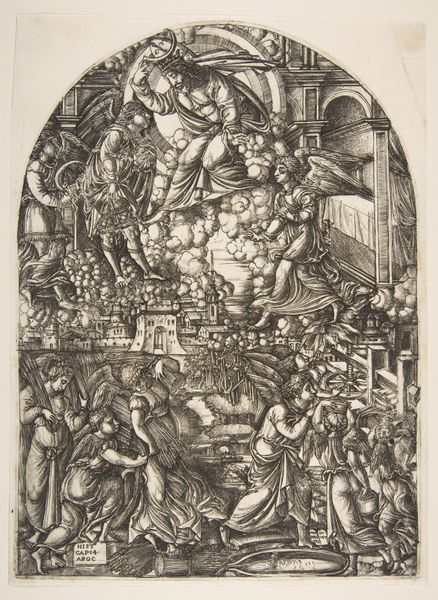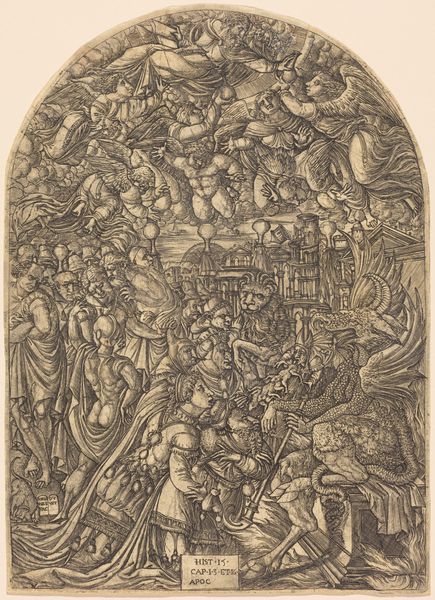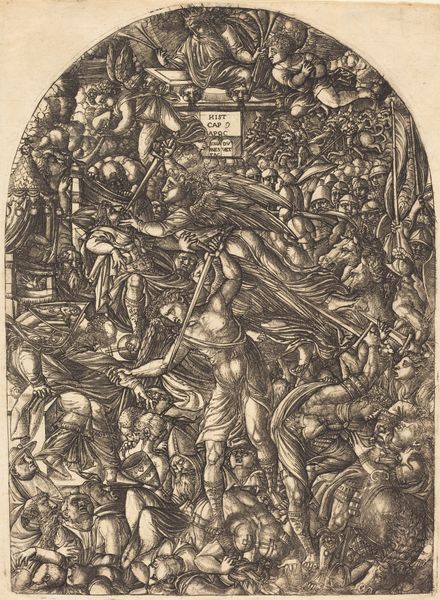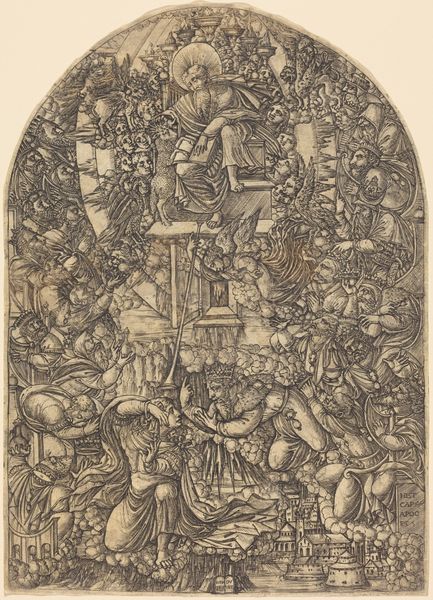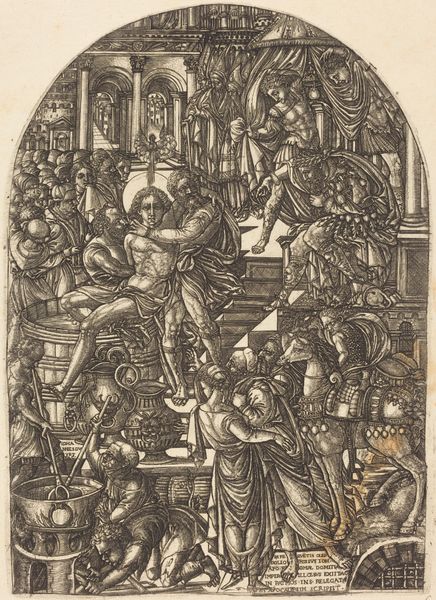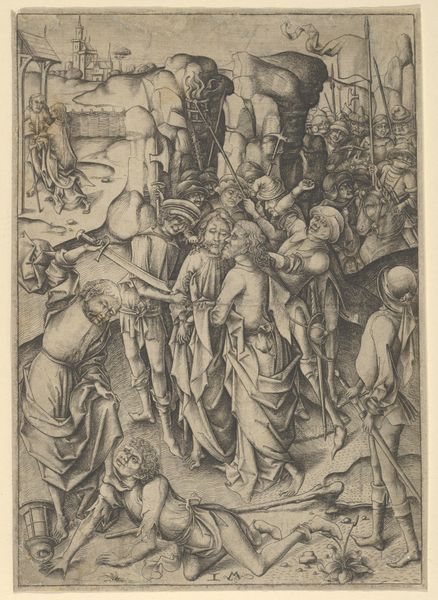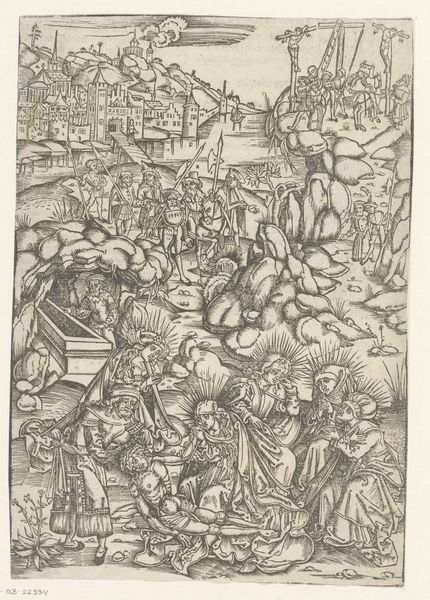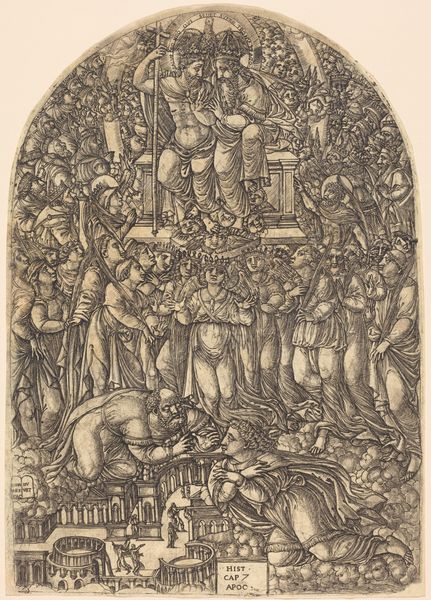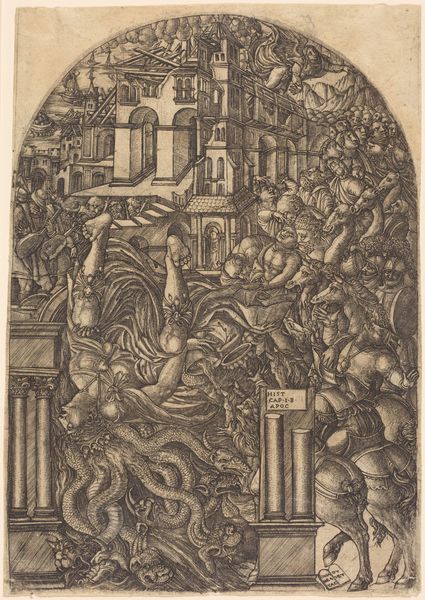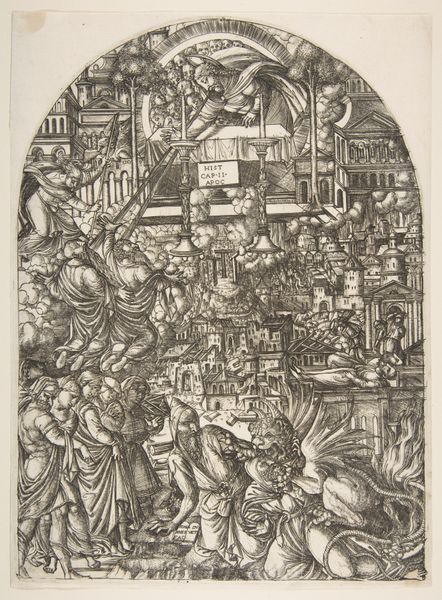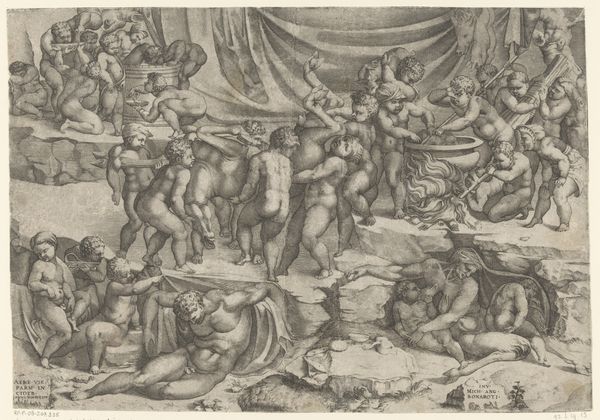
print, engraving
#
allegory
# print
#
figuration
#
line
#
history-painting
#
northern-renaissance
#
engraving
Copyright: National Gallery of Art: CC0 1.0
Curator: Let's turn our attention to this remarkable engraving by Jean Duvet, crafted between 1546 and 1556, entitled "The Winepress of the Wrath of God." Editor: My first impression is one of overwhelming intensity. It's a dense composition, packed with figures and activity, conveying a sense of chaotic energy. The stark black and white imagery really heightens the drama. Curator: It’s a powerful visual representation of a rather terrifying biblical metaphor, wouldn’t you agree? Duvet really leans into the imagery derived from the Book of Revelation. Note how the figures are arranged in distinct registers: celestial beings above, a ravaged earthly plane below. There is also the strong symbolism, most obviously centered on the idea of grapes being pressed, yielding the wrath of divine judgment. Editor: Absolutely. That duality between heaven and earth, innocence and punishment, it resonates even now. Looking at the lower register, with figures toiling at this gruesome winepress, one can't help but consider contemporary forms of exploitation, how some people’s labor literally "presses" others to their limits, all while elites prosper. It reminds me of Silvia Federici's work on the witch hunts. Curator: An interesting parallel to draw. Duvet worked during a time of enormous religious upheaval, of course. This work isn't just about any oppression; it speaks directly to spiritual authority, reflecting a very specific vision of the end times, heavy with symbolic weight. We must consider what an important and sensitive symbolic and psychological role that played. Notice too how the angel holds scales: a constant symbol throughout civilization as balance and impartiality. Editor: While acknowledging its historical context, I find that "balance" deeply problematic. It begs the question: whose vision of justice? And is wrath really justifiable, no matter the context? It forces us to examine power structures inherent in even the most sacred narratives and challenge ideas about inherent moral authorities. Curator: It’s undeniable that the engraving possesses this compelling intensity; it challenges us, and prompts further interrogation beyond its historical setting. Editor: Exactly. This artwork is definitely not a passive historical document. It can serve as an active touchstone for dialogue about injustice. It can enable us to confront persistent inequities both in the past and present.
Comments
No comments
Be the first to comment and join the conversation on the ultimate creative platform.
